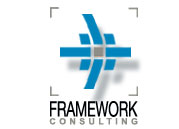Free Movement of Labour Article
Labels: commentary
Read more!
Labels: commentary
 Awhile back I wrote about a willingness to have my ideas stolen and used.
Awhile back I wrote about a willingness to have my ideas stolen and used. Labels: communication, consulting, ideas

Labels: presentations
 It is often said among professionals in the Caribbean region, that everything rides on "who you know."
It is often said among professionals in the Caribbean region, that everything rides on "who you know."Labels: mastery, networking
 Starting today, in a short speech that I will be delivering to a monthly HRMAJ meeting, I will kick off an interactive, online series on the topic of networking in a Caribbean context. It will culminate in the final edition of the series on November 16th which is the final day of the 2006 HRMAJ conference.
Starting today, in a short speech that I will be delivering to a monthly HRMAJ meeting, I will kick off an interactive, online series on the topic of networking in a Caribbean context. It will culminate in the final edition of the series on November 16th which is the final day of the 2006 HRMAJ conference.Labels: blogging, networking, presentations, virtual business
FirstCuts  A Framework Consulting Online eZine High-Stake Interventions -- New Ideas Issue 3 September 17, 2006 The 6 Hardest and Best Ways to Learn a New Skill by Francis Wade |
| Editorial Coming up with a new topic each month for this eZine is an interesting exercise. Whereas I can happily put anything I want in my blog, and just "follow the way the wind is blowing," I started to think that I should choose only "official" and "serious" topics for the eZine. The problem with doing that, is that I then began to focus on writing what I "should" rather than what I enjoy.A wonderful book on the art of writing called "Weinberg on Writing," advocates writing only about that which inspires, without exception. To break that law is to court real trouble, I am learning, as the "serious" topics are the ones that I find the hardest to complete. Furthermore, finding the time to write "official" material seems to be impossible. People often ask me: "Where do you get the time to write?" When I follow Weinberg's advice, and ignore my own fears, the answer is easy -- I follow my own, positive, inner energy, and the result is a virtuous cycle of "needing to write" from which I have been unable to escape since I started writing my first blog last year. And yes, I am loving it! Francis |
| The 6 Hardest and Best Ways to Learn a New Skill Excellence is an art won by training and habituation. We do not act rightly because we have virtue or excellence, but we rather have those because we have acted rightly. We are what we repeatedly do. Excellence, then, is not an act but a habit.Aristotle (384 BC - 322 BC) Sometimes the best way to learn a new skill is to take the most difficult path. The most effective, and by far the most challenging form of skill development I have found occurs using video-based training, accompanied with immediate "full frontal feedback." How does it work? Here is the recommended recipe in 6 Ways. 1. Start with a new interpersonal skill that is difficult to learn to do well. It might be listening, motivating, reflecting or probing. Or, it might be a combination of several skills such as coaching, public speaking, performance feedback or selling. In most cases of superior performance, the formula is simple: success = frequent practice + unique distinctions. Frequent practice involves creating multiple learning opportunities to improve performance. Unique distinctions are principles or mental models that are used to achieve better performance, but may only be used subconsciously by the most successful performers. 2. Create a workshop or seminar in which the new skill can be learned through repeated practice. Attempt to simulate the real environment in which the skill is to be used, and then provide opportunities to try different approaches, and learn from repeated attempts. For example, if the skill is selling, a workshop could be built around roleplays of typical, but difficult, selling situations. 3. To maximize learning, set the training up as an opportunity to receive feedback. As the repeated practice is undertaken, provide a combination of real-time feedback after each session, using coaches that are familiar to the participant, and also new one coaches. Working colleagues serve wonderfully as familiar sources of feedback. They know the participant, and can explicitly or implicitly include their past experience in the feedback they are giving during the simulated practice sessions. Sometimes, they find themselves providing a participant with feedback that they have been wanting to give for some time. To balance the feedback given by colleagues, include someone new in the group giving feedback to provide a source of "fresh" insight. This person can double as the group's facilitator. 4. To ensure that feedback is given at a rate at which the participant can use it, ensure that the facilitator is experienced in working with executives and senior managers. 5. Use video-tape recording to capture the simulated roleplay, and to replay key moments. This ensures that the feedback given is based on the factual events from the simulation as they are recorded, as opposed to how they are remembered. 6. Provide sound principles to participants at the precise moment when they are looking for clues on how to improve performance. These principles might be known to experienced managers from prior training. However, they gain new life when they can be used immediately to improve roleplay performance. Once they have heard the principles, give them a chance to practice them in untaped replays until their performance visibly improves. Gut-Reactions ~~~~~~~~~~~~~ The formula is simple enough. But, as someone who has used these 6 Ways in training managers throughout North and South America, I can say that the first reaction of participants is usually one of anxiety. Most people shy away from the mere idea of being taped. The few that welcome it are taken aback when they understand that the tape will be scrutinized by a group of their peers for immediate feedback! Furthermore, most participants experience a slight shock when they see themselves on tape for the first time, struggling through a difficult roleplay. When the feedback starts, most are quite nervous at being so exposed, and wary about what they are about to hear. Being this naked can be unnerving. Yet, most report at the end, that it is the best opportunity they have ever had to practice and learn at the same time. Some of the reasons given are that the feedback is based on recorded fact, rather than interpretation or memory. They appreciate the numerous opportunities to practice and learn. It is easier to learn and use the principles, even if they are not new, as participants can immediately see how they help. Participants often report a particular surprising discovery. Often, it starts with a feeling of embarrassment at a less-than-stellar performance. It continues with feedback, and further practice. It ends with a successful redo of the roleplay that is warmly acknowledged by the group as a breakthrough. Participants say they are surprised that the new approach they are trying feels strange, unfamiliar and even uncomfortable, in spite of being told that their performance in the replay has visibly improved. We liken this to learning to write with one's non-preferred hand. This is all the encouragement that a participant needs to give up old habits and learn new practices. They demonstrate that even though this method is nerve-wracking, it is ruthlessly effective. In a recent project, we were able to use the 6 Ways to deliver training to 80+ executives in three Caribbean region countries from a single company. These top-level managers were able to receive more feedback from their peers in a single session than they had ever received before, and many were able to demonstrate immediate, observable improvements in skill. It helped us see that, like their extra-regional counterparts, the 6 Ways are an effective, but challenging way to teach critical skills. Next Steps ~~~~~~~~~~ To discuss this topic further, and the approach we have built on these techniques called Lights!Camera!Action! place the following url in your browser to visit our company blog: http://tinyurl.com/zoah2 We promise to respond to comments and discussion added. To download an article on training executives using the Lights!Camera!Action! method, visit our website, click on Services and Select Facilitating Difficult Conversations, or place the following URL in your browser: http://urlcut.com/LightsCameraAction Useful Stuff Tips, Ads and LinksCaribbean360.com is simply the best single place to get news from around the Caribbean, sent twice a week in your inbox. Visit www.caribbean360.com CaribHRForum is a discussion list sponsored by Framework Consulting and offered free of cost to HR practitioners. The conversation is free-ranging on topics of interest to professionals across the region. For more information, visit our homepage www.fwconsulting.com and the link to CaribHRForum is at the top. CaribHRNews is a compilation of Caribbean HR news that our firm offers to members of CaribHRForum on a weekly basis. It can be viewed at any time at www.squidoo.com/caribhrnews Upcoming Speeches: I will have the honour of speaking at 2 events. One is the upcoming inaugural Business and Management Conference sponsored by the University of Technology in October and the other is the annual HRMAJ conference -- both in Jamaica. See the Framework News Room at our website for more information and details: www.fwconsulting.com Current Research Update: Study of Trinidadian Executives Working in Jamaica. We are still in the process of conducting interviews. One new idea that we are backing is the formation of a Trinidadian-Jamaican Chamber of Commerce, with a vision of chapters in Port of Spain and Kingston. To discuss this idea, or to put your weight behind it, visit our blog at http://tinyurl.com/knjqf and add a comment. To manage this newsletter, we use an excellent programme called AWeber that you can explore here:- http://www.aweber.com/?213577 Subscriber Q&A Q -- Where do you find the time to write as much as you do? A -- I used "Getting Things Done" by David Allen (www.davidco.com) for the best concepts on time management, plus a book I recently discovered on writing called "Weinberg on Writing" by Gerald Weinberg. Also, it doesn't hurt to have a LOT of energy (according to my wife.) General and Newsletter Subscription Info To contact us with feedback, questions or praise, email newsletter@fwconsulting.com To subscribe, please email firstcuts@aweber.com from the email address that you which to be subscribed from Please feel free to use excerpts from this newsletter as long as you give credit with a link to our page: www.fwconsulting.com FirstCuts © Copyright 2006, Framework Consulting, except where indicated otherwise. All rights reserved worldwide. Reprint only with permission from copyright holder(s). All trademarks are property of their respective owners. All contents provided as is. No express or implied income claims made herein. Your business success is dependent on many factors, including your own abilities. Advertisers are solely responsible for ad content. | Contents Editorial Feature Article Useful Stuff
|
FirstCuts: An Online Newsletter From Framework Consulting Inc. 954-323-2552 876-880-8653 3389 Sheridan Street #434 Hollywood FL 33021, USA |
Labels: customer *.*
 Recently, our firm had the opportunity to strengthen its approach to performing business research. Given the fact that we are committed to documenting the way we do business (a la "The eMyth") and in sharing as much of it as possible for others to use, I thought that I should start to do it in this blog.
Recently, our firm had the opportunity to strengthen its approach to performing business research. Given the fact that we are committed to documenting the way we do business (a la "The eMyth") and in sharing as much of it as possible for others to use, I thought that I should start to do it in this blog.The end result of doing this revamp was that we created a method that gave us a surprising set of insights and understanding.
At the outset, I should say that I have found business research to be boring as hell. And I say this from experience - I teach the damned subject in the
To be honest, my students usually don't find it boring. Instead, they are usually found complaining about how difficult the material is! Fear of not doing well overcomes ennui any day.
With that in mind, I took the lead in designing an approach that seemed to make sense for the kind of research that our firm is called on to do here in the region. Given that we focus exclusively on solving difficult people problems that impact the bottom line, it seems fitting that research studies that involve people would be a natural part of what we do.
Furthermore, our firm’s tagline is “High Stake Interventions” which means that we should be doing the kind of research that makes an unforgettable impact, whether it is actually implemented as we recommend or not. It definitely should not produce a run-of-the mill set of outputs.
Furthermore, given our focus on people, our approach should account for the relatively low levels of education found in parts of the region, and some of the cultural nuances we have come across. In some companies, employees are not functionally literate, let alone computer literate. Also, many are wary of completing surveys, no matter what the guarantee is of anonymity.
The Opening Bias
It might be fair to say that most business research takes place in the form of employee surveys.
The research firm tackles the assignment with no biases or predispositions, with no pre-set agenda.
Our research is quite different.
It starts with a focused question, concern or issue. It ends with a clear answer, new mental models and a framework designed for action.
In this respect, it is an important part of what we deliver - High Stake Interventions - and quite different from opinion surveys (although survey instruments might be included.) The difference begins with the need to decisively answer a Single Question that is of concern. Diving into the Single Question may lead to the raising of others, but they are incidental to the main point.
Coming up with Sinngle Question sometimes involves several clarifying as the client management itself is often not clear on what it wants.
Example questions might include:
what is the source of low employee motivation?
why is the CEO disliked?
Is the foreign ownership of the company a major problem?
Why are employees not referring our company's products and services to others?
Why is there no evidence of the culture we want to create?
These questions are not easy ones to answer, and when they must still be answered the wise executive can sometimes see the need to bring in outside help to give an objective point of view.
Yet, at the same time this is not about discovering some scientific truth. Instead, in our research we bring along our prior understanding and experience, and fully understand that that the very process of asking probing questions by itself changes the answers that are given. Ultimately, the kind of research we do is about attitudes and perceptions, and they are not amenable to perfect scientific measurement.
Mind Mapping
Once the Single Question is defined, a Mind Map is constructed to bring together all of the related issues into a single place. This act of “emptying the mind” is a powerful, nonlinear way to brainstorm. The result is a diagram showing how issues and sub-issues are woven together and linked to each other. Click here for a link to mind mapping.
Early Answer
From the gestalt of connected pieces of information on the Mind Map, the team can develop an initial hypothesis, or early answer. This is given in the form of a complete solution or answer to the Single Question, as if the data that is known at this point were all the information that could be known.
This initial hypothesis is held in the background as a possible solution, and is only discarded when there is clear evidence that it is incorrect. At that point, a new early answer is developed to replace the old, and that one is treated in the same manner until the project comes to a close, and the final hypothesis is the one that the final recommendations are built around.
Issue Tree
The completion of the map makes it possible to begin the linear process of analyzing the issues and sub-issues.
The initial question is broken down into a possible set of answers, and sub-answers.
For example, the question: Is the machine functioning? Can be answered with the following answers and sub-answers:
Is the machine functioning?
- Yes
- No
- It needs lubrication
- It must be overhauled
- The power source is corrupt
Furthermore, each answer can be broken down into several sub-answers. For example, “It needs lubrication” can be further broken down into other options such as “Use grease on joints” and “Use a light oil on pressure points.”
The questions and answers are brought together into a single diagram to create an Issue Tree that shows the important lines of inquiry to be explored. If a team is to be involved on the project, then the issue tree is divided up among the team members who each are accountable for ensuring that the correct data is gathered to answer their assigned issue. In this way, they are the “experts” on the project with respect to that issue. See a link here to a description to Issue Trees.
Questionnaires and Surveys
The next step in our methodology is to convert the branches of the tree into questions that can be asked in interviews, surveys and focus groups. At this point, it is important that the questions be worded in a way that the responses precisely match the data requirements of the issue tree. At this step, regional differences need to be brought into play, as standard English plus local dialect are used to convey the exact meaning and sentiment.
If a team is involved in gathering the data, then each member must be “trained” in seeking out the right kind of data required to meet the needs of the research team.
We use a multi-faceted approach to gather the information required. There are cultural and logistical limits to using any single approach to the exclusion of others, and a combination of approaches helps to balance out the quality of information gathered.
Sharing Data
Given the fact that the interviews are usually not conducted by the full research team, then the data must somehow be shared among team-members. Our firm's practice is to electronically scan and share notes through a wiki web-site. In this way, each team member can have at their finger-tips all the written notes taken from each interview. In the future, we hope to expand the data sharing options to include voice-based files.
Secondary Data
Once the primary data is gathered using the methods described above, we perform secondary data searches using sources in libraries and the internet. Knowledge of how to conduct searches on Google, in the blogosphere and through human networks of regional contacts are all critical to finding information that is timely and relevant, but also credible.
Analysis
Each team member uses the data gathered to help answer the questions in the branch of the issue tree for which they are responsible. They also use pertinent data from secondary research if possible to "prove" the final answer to the team.
This ''proving" conversation marks the start of the portion of the project that is probably the most creative.
The basic evidence that is gathered is presented, and the team starts to assemble a framework that can hold both new data being gathered on the project, and data from past experience. This creative process is a unique one that pushes the team in a search for more and more effective ways to answer the single question, and address the contents of the issue tree.
The method ensures that the framework developed is one that the company can use if he situation is ever repeated under similar circumstances.
Report Writing
The final report is, at its heart, a teaching document meant to persuade the reader that the recommended course of action is the one that will yield the greatest results. In this sense, it does not follow the academic method of report writing that I teach in my classes. Our reports would not get an A in a research methods class, and that is because we are not trying to meet academic requirements.
In our approach, however, the real value lies in the frameworks that we create. They are designed along the following guidelines:
n they must be memorable, and easy to pass on
n they must be simple
n they must be based on the data that has been collected
n they must pass the test of common-sense
The frameworks we build also have a heavy intuitive component, and rely on a blend of experience and insight for their creation. New phrases, distinctions and terms are freely created to avoid the concepts being presented to fall into old mental models that prevent our clients from seeing the problem and solutions in a new way.
For example, we created the term “emotional workplace maturity” to explain why the behaviour of a foreign owned company was so different from the behaviour found in the home country. This new definition helped to drive home the need for new and different ways of preparing managers from the home country to cope, and also helped the owners to see why programs they had used with great effect back home were not working.
Summary
Our method is designed to be a form of intervention, rather than an example of business research. Given the fact that we are looking at opinions, culture and attitudes in order to help solve business problems, our focus is on what will make a difference when the recommendations are implemented, and the new frameworks have begun to be used.
Labels: consulting, fwcstrategy